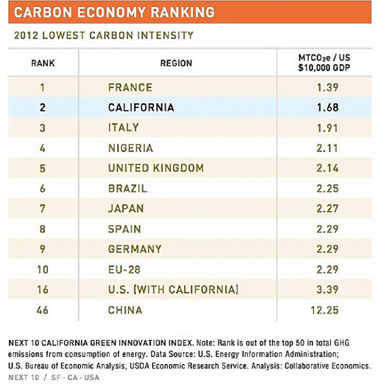California’s legislature has been busy lately passing historic climate bills, the latest of which brings solar to low-income communities – typically the last to benefit.
Notably, this summer, the legislature passed Senate Bill 350, which puts Governor Brown’s proposed new targets into law. The Renewable Portfolio Standard now requires 50% renewable energy by 2030 (up from 33%) and calls for doubling building energy efficiency by then.
At this year’s inaugural address, Governor Brown said, "With California on track to reach 33% renewable energy by 2020, a cap-and-trade system that prices carbon, and strong incentives for cleaner transportation, "it is time to establish our next set of objectives for 2030 and beyond."
He proposed 3 goals for 2030, two of which are now law:
- 50% renewable electricity!
- 50% cut in petroleum use in cars and trucks
- Doubled efficiency in existing buildings and cleaner heating fuels.
Since then, he issued an executive order that requires California to cut greenhouse gas emissions 40% by 2030, below 1990 levels, making it possible to reach the ultimate goal of 80% cuts by 2050, said Brown. The goals are the same as the European Union and are what’s needed to keep temperature rise from exceeding 2 degrees C.
The state is already following through, having signed contracts to convert 23 state office buildings – including the Capitol – to 100% renewable electricity.
New Laws Benefit Low Income Communities
Under the Multi-Family Affordable Housing Solar Roofs program, the state will spend up to $100 million a year for at least a decade to install solar systems on 210,000 affordable housing units.
Another bill returns a portion of fines levied against polluters to the communities they polluted, usually low-income neighborhoods. And another bill makes it more difficult to locate hazardous waste facilities in poor neighborhoods.
Poor neighborhoods will also benefit from building retrofits that make their homes more comfortable, while significantly lowering energy bills.
Cutting Oil Consumption
But the oil lobby managed to kill the third leg of Governor’s Brown’s proposal – cutting oil consumption 50% by 2030. As usual, they spent millions of dollars on misleading television ads and mailers convincing people that "minivans would be banned" and gasoline would be rationed.
Governor Brown responded: "This is one skirmish, but it’s increasing the intensity of my commitment to do everything I can to make sure we reduce oil consumption in California. My zeal has been intensified to a maximum degree."
Since then, however, the California Air Resources Board re-adopted the low carbon fuel standard – a key part of meeting the Governor’s goal. It requires transportation fuels to decline in carbon intensity 10% by 2020. It works by setting annual carbon intensity targets (based on a lifecycle analysis of various fuels), which decline each year.
California also has goals for zero emissions vehicles (electric, fuel cell), requiring 2.7% of new cars sold this year, and reaching 22% in 2025.
If the state were a country, it would rank #2 for its low-carbon economy:
Impact on Manufacturing?
For those who wonder whether these policies are harming the economy, a report by Next 10 shows otherwise.
Utility bills are dropping for homes (among the lowest in the US) and businesses, and California continues to be the top state for manufacturing – leading on productivity, exports, and jobs. Costs are not rising for manufacturers and there isn’t a mass exodus as lobbyists – such as the oil industry front group, Californians for Affordable and Reliable Energy (CARE), warn.
In fact, California’s manufacturing sector has grown three times faster than the rest of the US over the past decade at 15% versus 5%, and more offshore businesses have returned to California than any other state.
Read our article, Most Ambitious Climate Goals Lead to Greatest Economic Growth.
Read the report, California’s Manufacturing & Benefits of Energy Efficiency:

